Table of Contents
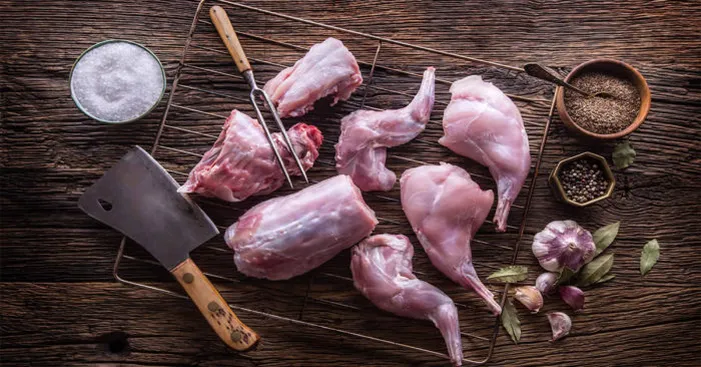
Are you tired of the same old chicken and beef options at the grocery store? Want to try something new and packed with nutrients?
Rabbit meat is the answer you’ve been looking for!
This lean, high-protein meat is not only delicious but also offers a host of health benefits.
But before you run to the store, it’s important to understand the potential side effects of rabbit meat as well.
This blog post will dive deep into the pros and cons of rabbit meat, leaving no stone uncovered aspect.
From the rich nutrient content to the food safety measures, you’ll have all the information you need to make an informed decision.
Don’t miss out on this opportunity to expand your meat options and add a nutritious boost to your diet.
Rabbit meat: overview
Meat of any kind is an important source of food for humans since it contains an abundance of nutrients beneficial to the human body.
The white meat in particular is very much appreciated not just for its lean cuts but also because of its superior virtues compared to red meat.
Mostly, meat is known for its high content in proteins which are essential for the construction of muscles, the production of hormones and cells…
Also, meat contains a lot of minerals, fats, calories, and vitamins, especially vitamin B12, which fuel our bodies with the energy we need.
However, when we hear the word “meat” usually we have certain images in our heads including chicken, beef, pork, lamb, fish…
A brief history of rabbit and its meat:
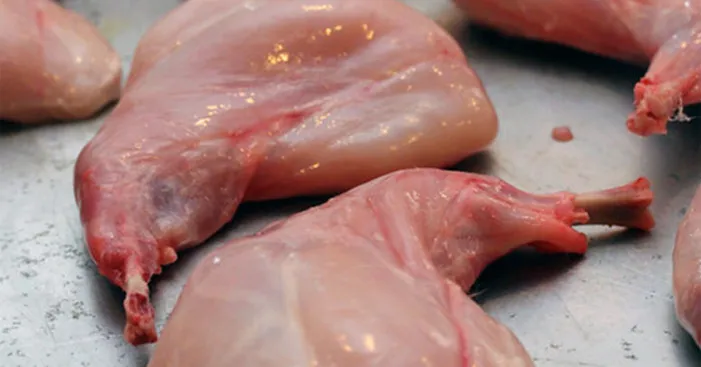
Wild rabbits are the origin of all the rabbit breeds that we have today.
In Latin, it is called Oryctolagus cuniculus and that means “European rabbit” which was transported across the continents later on.
The first fossil form of a rabbit comes from Andalucia (South Spain) which dates between 300,000 and 120,000 years ago, in the Middle Pleistocene epoch.
Therefore, the home of the rabbit would be Spain.
In fact, did you know that Spain earned its name from rabbits?
The story says that the Phoenicians, a marine people of the Antiquity, during one of their journeys, were skirting the Spanish coasts.
When they got closer to the coasts, they saw small mammals jumping here and there in the distance.
Those jumping mammals looked like species they have in their homeland called, the damans (nowadays Hyrax), so they named it “the country of the Damans” or “I-Saphan-Im”.
When these Phoenician names were translated into Latin it gave the word “Hispania”, the land of rabbits.
Today, the biggest consumer of rabbit meat is China with almost 1 million tonnes which make 60% of the global total consumption.
In the western world, rabbit meat consumption is very rare and it’s probably because of the perception of a rabbit being cute, or because of religious beliefs.
However, few places even within the US do offer rabbit meat in their menu for those who are searching for exotic flavors.
Rabbit meat benefits and nutritional values:
Nutritional values:
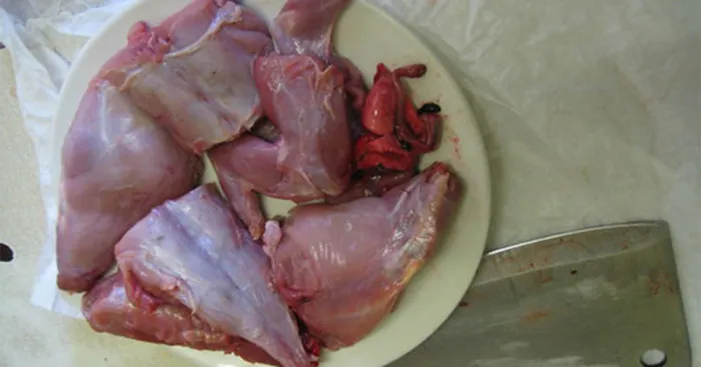
This animal’s meat combines the juiciness of chicken meat and turkey meat while offering a unique flavor due to its low-fat content.
As for its composition, it has much beneficial content and contributes to the metabolism of saturated fats in the liver.
In fact, Rabbit meat is among the top 10 meat sources of protein and offers more proteins than chicken, salmon, and lamb.
They are among the animals that belong to the domestic mammals which are either bred for fur & meat or raised as pets.
However, rabbit reproduction requires special handling as they are super vulnerable to diseases and environmental conditions.
Rabbits are usually hyperactive from dawn until dusk and they are very quick and cautious.
You can notice their cautiousness even in domestic breeds which probably got it from their ancestor, the wild rabbits who had to be cautious to survive birds of prey and other hunting animals.
Thanks to its hyperactivity, rabbit meat is full of muscles and fibers with very little fat content with bones that only make around 20% of its weight.
Among the many nutrients in rabbit meat there are B vitamins, and minerals such as phosphorus, selenium, and iron.
This data counts for the recommended daily intake of (85g to 3oz) cooked rabbit meat:
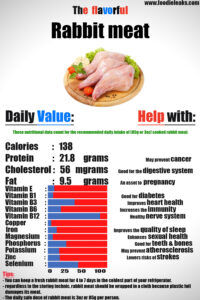
- Calories: 138
- Protein: 21.8g
- Cholesterol: 56mg
- Fat: 9.5g
- E vitamin: 11%
- B1 vitamin: 9%
- B3 vitamin: 45%
- B6 vitamin: 22%
- B12 vitamin: 88%
- Copper: 6%
- Iron: 15%
- Magnesium: 8.5%
- Phosphorus: 31%
- Potassium: 19%
- Zinc: 20%
- Selenium: 51%
Benefits of rabbit:

Rabbit meat doesn’t just taste delicious, it is very healthy, and rich in nutrients, as rabbit meat contains fast-digesting and beneficial proteins, and their amount is higher than that of red meat and chicken.
Some of the most important potential benefits of rabbit meat are:
High in protein:
You probably think that chicken breast is the richest in proteins!
Well, you’re not completely wrong, but at that high level of protein sources, there are many types of meat, not just chicken breasts.
Among those meats, rabbit meat is known for its richness in proteins with more than 25g of protein per 3.5oz (100g).
The unique quality of rabbit meat proteins is that they are much easier to digest compared to proteins found in other meats.
Low in fat:
Due to the hyperactivity of rabbits, their meat is very low in fat with just 3.5g of fat per 3.5oz (100g)
Because of that, rabbit meat is a perfect choice for those who want to lose weight.
Also, a diet low in fat reduces the bad cholesterol in the blood and may prevent heart diseases and high blood pressure.
May reduce risks of cancer:
A rabbit under 7 months old does not retain strontium in its body, a chemical element with a radioactive nature capable of causing cancer.
Because of that same reason, rabbit meat is prescribed for cancer patients to get rid of any possible additional effects of radiation coming from food.
In addition, rabbit meat contains more than 40% of selenium per 3.5oz (100g) and this mineral helps eliminate cancer cells.
One study showed that selenium is very effective in protecting people from the risk of breast cancer, lung cancer, and prostate cancer.
Good for the digestive system:
Rabbit meat is considered the lightest and safest meat among all meats.
Once consumed, it favorably affects the intestines and the stomach.
Also, consuming rabbit meat will not cause bloating or indigestion, it can be safely used after surgery as it won’t bother the intestines.
This is why it is recommended for patients who suffer from gastrointestinal tract diseases.
An asset to pregnancy:
Doctors recommend easy-to-digest food for pregnant women, and rabbit meat is super easy to digest.
Even after labor, and during the first few months of breastfeeding, most women follow a special diet that protects the baby from abdominal pain.
In that diet, rabbit meat is also unconditionally acceptable as it will only provide vitamins and minerals without causing fermentation.
Good for diabetes:
This meat is capable of reducing the levels of glucose in the blood.
Improves heart health:
Rabbit meat contains a good amount of potassium, a mineral that helps the heart to have proper pulsing.
This same mineral in rabbit meat increases the elasticity of blood vessels which lowers the risk of blood clotting.
In rabbit meat there is no cholesterol, moreover, it promotes the removal of cholesterol plaques and is an excellent prevention of atherosclerosis.
Improves sleep and relieves stress:
The B vitamins inside rabbit meat has the capability of improving the functioning of the human nervous system and ensure a normal metabolism.
Consequently, once you consume rabbit meat, it improves the quality of sleep and the levels of stress and depression gradually disappear.
Boosts the immunity:
Rabbit meat is a good source of magnesium, a natural mineral essential for our immunity system, and its fight against free radicals that cause diseases.
Beneficial for teeth and bones:
Another mineral abundant in rabbit meat is calcium, which is very important for maintaining healthy teeth and bones.
It should be noted that a diet poor in calcium may lead to a calcium deficiency which itself could result in weak bones and osteoporotic.
Sexual benefits:
Rabbit meat is a great source of Zinc with more than 14% per 3.5oz (100g).
This mineral is very essential to maintain the health of a male’s reproductive system.
Also, it is necessary for the production of sex hormones, and any deficiencies in this mineral can lead to a sperm deficiency.
Therefore, rabbit meat should definitely be in your diet at least once a week because of all of these health benefits.
It is not just because of the health benefits, but rabbits produce 2721 grams of meat when given the same amount of food and drink that a cow eats to produce only 453 grams of meat.
Cooking rabbit meat:
In addition to the rich and deep flavor of rabbits, it combines well with any dish as it can be fried, steamed, made into meatballs, stewed, or added to a salad.
Rabbit meat not only pleases with its unique taste, but it also amazes with its soft texture.
Here are two yummy recipes to kick start your experience with rabbit meat:
Rabbit with vegetables:
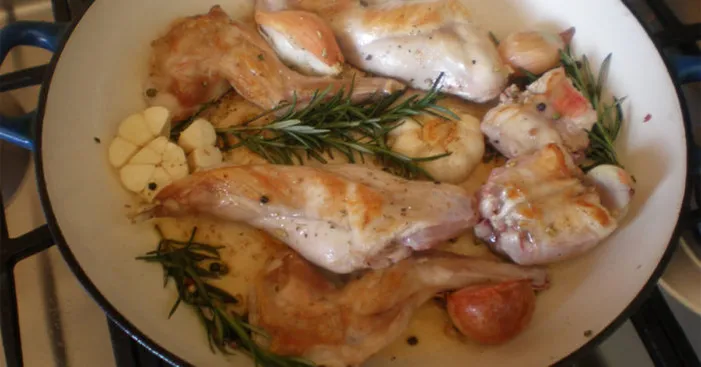
Ingredients:
- Cut rabbit into four pieces.
- One finely chopped large onion.
- One sliced green bell pepper.
- One large carrot, cut into circles.
- Vegetable oil.
- Salt.
- Pepper.
- One small cup of lemon juice.
- 1 tbsp of white flour.
Steps:
- Cut the rabbit meat into pieces and clean it well then place it aside to lose excess water.
- In a large frying pan, heat some vegetable oil (small cup) for about 5 minutes.
- Add the pieces of rabbit meat and leave them until they turn brown and well-cooked, then flip them to the other sides until they also turn brown.
- Add the chopped onion, green pepper slices, and carrot circles to the frying pan alongside the rabbit meat and mix them all together.
- Now take out the rabbit meat and the vegetables leaving only the hot oil in the pan, then add 1bsp of white flour to the hot oil and leave it for 1 minute.
- Pour 2 cups of water in the pan alongside the flour, then add salt and pepper for seasoning.
- Now dip the rabbit meat and vegetables again in water and let them all cook on low heat until it boils.
- Add lemon juice to the pan, then directly remove the pan from the heat and serve it into dishes.
- Serve rabbit meat with grilled vegetables accompanied by pieces of bread.
Rabbit with rice:
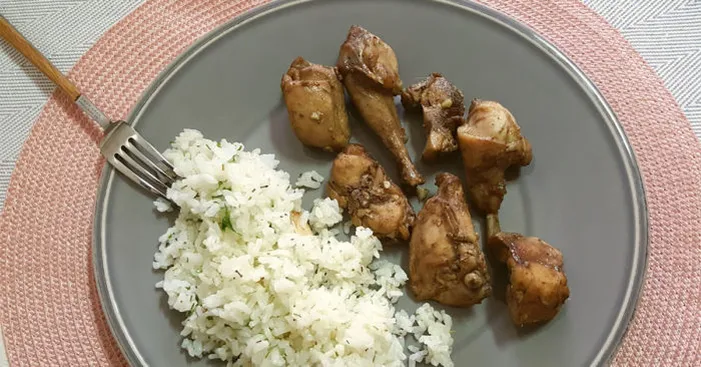
Ingredients:
- Rabbit meat as much as desired.
- Sliced green bell pepper.
- Sliced onion.
- Dried lime (1 small cup of lemon juice if it’s not possible).
- Salt.
- Pepper.
- Spices.
- Vegetable oil.
- Two cups of long grain rice.
Steps:
- Wash the water then soak it, in a bowl, in warm water with salt.
- Clean the rabbit meat well then place it aside to lose excess water.
- In a frying pan, fry the chopped onion in the vegetable oil until it turns yellow, then add the pieces of rabbit meat to the onion and let it fry until the meat is well-cooked.
- Add the spices and salt for seasoning and mix the ingredients in the pan.
- Now use dried lime by grounding it alongside the other ingredients, or just add the lemon juice in case you don’t have dried limes.
- Also, add the slices of green pepper and let the ingredients cook together, then distribute the cleaned rice evenly over the ingredients.
- Now add water until it covers all the ingredients then leave them cooking on high heat until the water starts to boil.
- As soon as the water starts boiling, change the heat to a medium degree and let the ingredients boil until the rice is well cooked.
- That’s it! You can serve it in dishes alongside a green salad.
Buying rabbit meat:
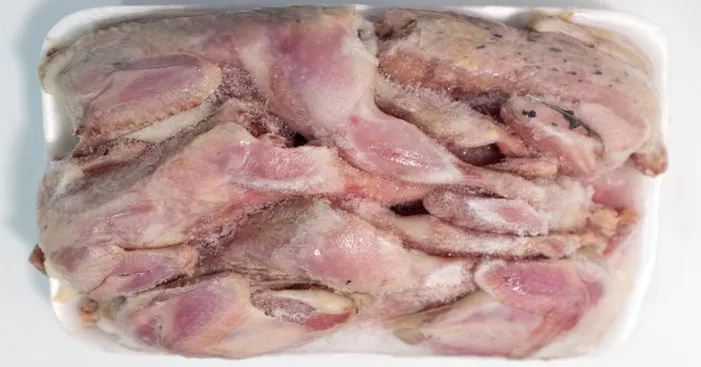
There are several indicators to know the quality of the rabbit meat, you don’t have to be an expert to know if is fresh or not.
An ideal rabbit is neither too young nor too old around 12 weeks of age because an old rabbit’s meat is more rigid and less delicious.
Technically, it’s not easy to guess the real age of a rabbit but around that age, it should weigh about 2.2lbs (1.5Kg).
This may not be possible due to the rareness of this type of meat, however if it’s possible, purchase wild rabbit to get the best flavor.
If you purchase frozen rabbit meat make sure it contains little ice as it must not exceed 5% of the total mass of the product.
As for the meat, it should be pink with almost 0% fats, the liver must be red without spots and a layer of fat should surround the kidneys.
Also, most of the meat in a rabbit is usually located in the saddle (lower back) which is why you need to make sure it’s fleshy.
Finally, as a sign of a healthy rabbit, the front legs must be flexible with thick joints.
Storing rabbit meat:

Since it’s not often that we purchase rabbit meat, most people store it in the refrigerator to consume it within days but others freeze it for future uses.
You can keep fresh rabbit meat for 4 to 7 days in the coldest part of your refrigerator.
However, regardless of the storage technique, rabbit meat should be wrapped in cloth because plastic foil damages its meat.
Like most types of food, freezing rabbit meat can literally put it on hold for up to 6 months and still retain its qualities.
A useful tip is to cut the rabbit meat into pieces and place them in airtight bags before placing them in the freezer.
Possible side effect of rabbit meat:

Despite all the health benefits of rabbit meat mentioned so far, it still has some contraindications.
Consuming large quantities of rabbit meat cause an occurrence of a neuro-arthritis diathesis which could lead to several joints issues including arthritis, and specifically gout.
As for gout patients, rabbit meat is acceptable in small amounts, around 5oz (150g) per day is totally safe to consume.
Also, to reduce the amount of purine in rabbit meat and make it even safer for gout patients, it can be boiled 3 times, changing the water each time.
Consuming more than 5oz of rabbit meat and not boil it several times before consumption can cause an exacerbation of the disease.
When the human body digests large quantities of rabbit meat, hydrocyanic acids may form in the guts and lead to serious poisoning.
In addition to the poisoning, hydrocyanic acids can cause arthritis or psoriasis especially if the rabbit was raised on a poor diet.
Rabbit meat quality depends on its nutrition, the best quality is from reputable breeders who raise rabbits in ecologically clean farms rather than mega-breeders & factories…
For children, pregnant women, and the elderly, it is best to use the same technique as for gout patients by boiling the rabbit meat in different waters.
